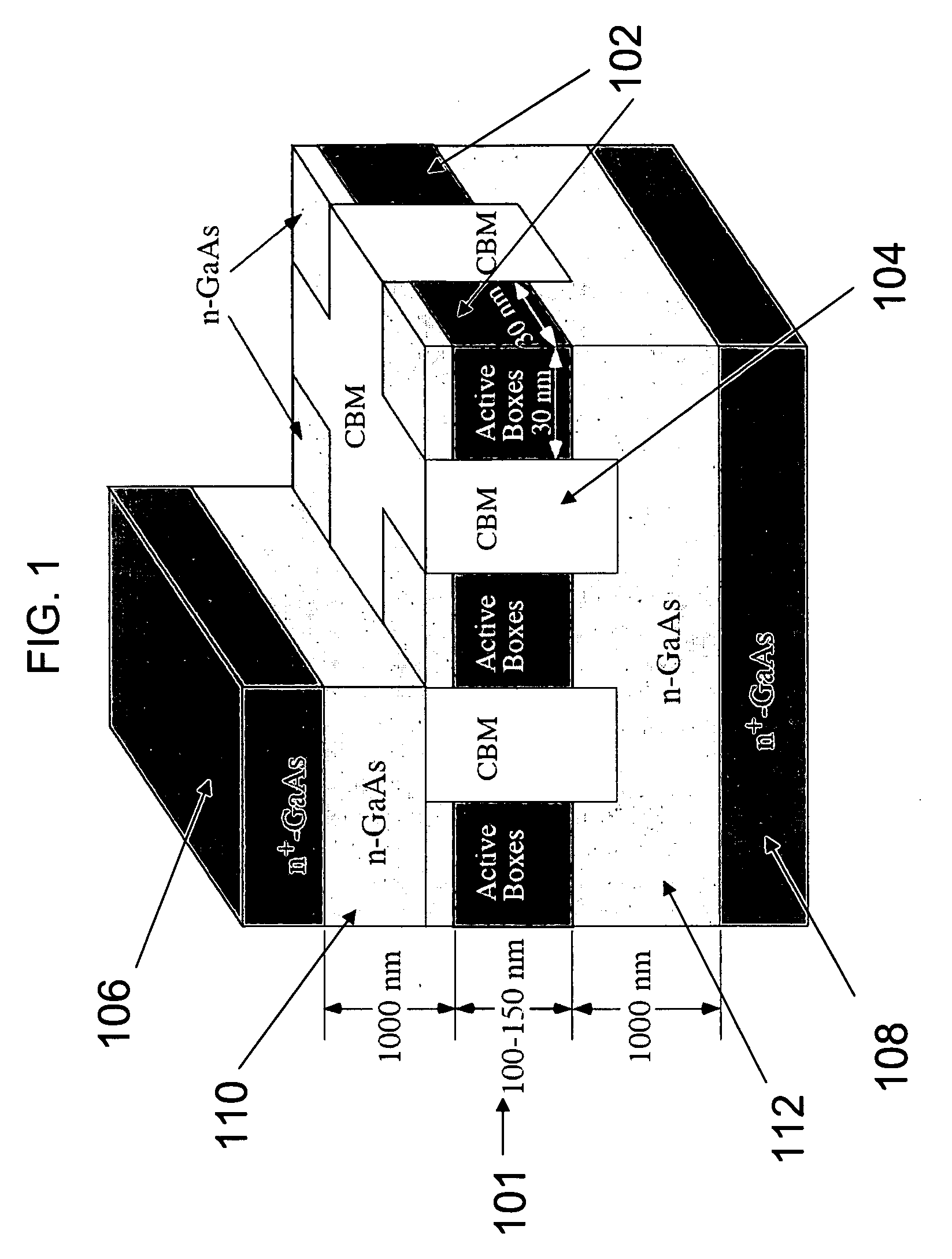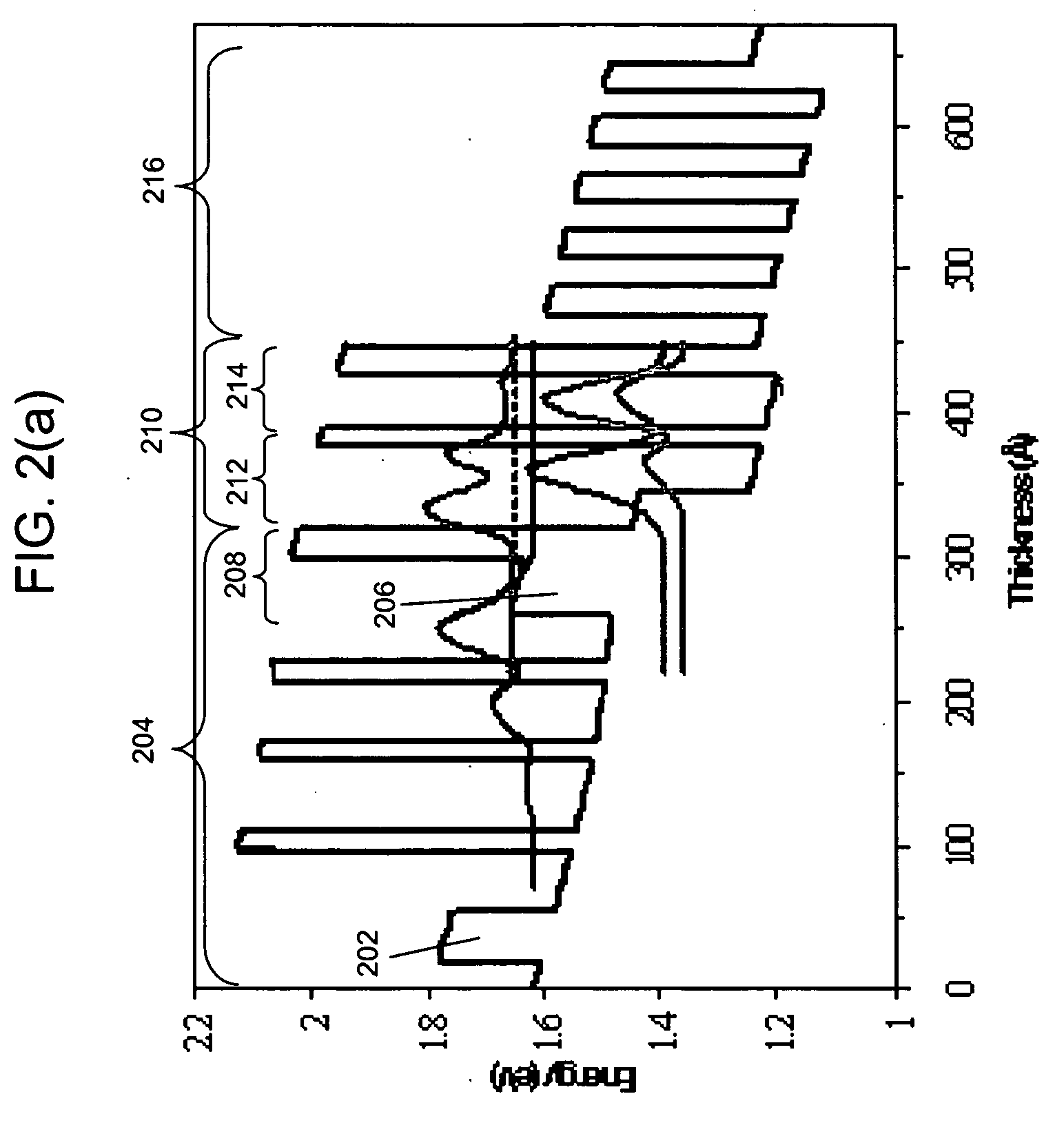Intersubband quantum box stack lasers
a quantum box and stack laser technology, applied in the field of semiconductor lasers, can solve the problems of low radiative efficiency, low confinement, low efficiency of wall plugs, etc., and achieve the effects of improving confinement, long-range coherent coupling, and preferential enhancement of modal gain
- Summary
- Abstract
- Description
- Claims
- Application Information
AI Technical Summary
Benefits of technology
Problems solved by technology
Method used
Image
Examples
Embodiment Construction
[0032]The present invention provides semiconductor lasers having an APC structure that allows scaling of the coherent power by using a waveguide having a periodic structure that selects operation in a single spatial mode from large-aperture devices. The lasers include an active medium that includes an array of quantum box ministacks, each ministack containing 2 to 5 vertically stacked, coupled quantum boxes.
[0033]The present lasers are capable of providing an output power of at least about 0.5 Watts (W). This includes embodiments that provide an output power of at least about 1 W, further includes embodiments that provide an output power of at least about 5 W and still further includes embodiments that provide an output power of at least about 10 W. The lasers are also capable of providing a wallplug efficiency of at least about 30%, and may operate at low temperatures (e.g., room temperature (˜30° C.) operation). In some embodiments the lasers have a wallplug efficiency of at least...
PUM
 Login to View More
Login to View More Abstract
Description
Claims
Application Information
 Login to View More
Login to View More - R&D
- Intellectual Property
- Life Sciences
- Materials
- Tech Scout
- Unparalleled Data Quality
- Higher Quality Content
- 60% Fewer Hallucinations
Browse by: Latest US Patents, China's latest patents, Technical Efficacy Thesaurus, Application Domain, Technology Topic, Popular Technical Reports.
© 2025 PatSnap. All rights reserved.Legal|Privacy policy|Modern Slavery Act Transparency Statement|Sitemap|About US| Contact US: help@patsnap.com



